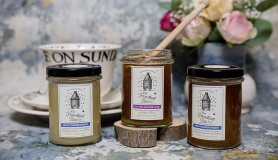The aim of the day is to break down the common stereotypes surrounding the condition and to educate the medical profession so that people can get the treatment they deserve.
Research by the Royal College of Psychiatrists shows that one in ten people self harms. Self-harming is any deliberate, non-suicidal behaviour that inflicts physical injury to an individual’s own body. It can take the form of scratching, hair-pulling, cutting, taking tablets, burning, piercing or swallowing objects amongst other things. To the person who has never self-harmed it can be difficult to comprehend, but the action of self-injury is often a way to cope with extreme emotional distress. The sensation of pain can provide a calming feeling, or a sense of control, or might be used as a way to ‘feel’ if the person is experiencing numbness or disassociation. It is not just teenage girls who self-harm either; the same RSP research showed that it affects a wide range of people. Although suicide is a separate issue, the two are linked in that self-injury can be a way of coping with suicidal feelings and may be a survival strategy.
Parents cite many feelings caused by discovering their child is self-harming, from guilt to grief, anger, shock and hopelessness. If you believe your child might be hurting themselves, the way in which you respond will have a huge impact. Blaming and shaming are an absolute no-no as they will cause a child to turn inwards with even more self-disgust. Don’t upset your child by asking them to show you their injuries either – according to Life Signs: Self-Injury Guidance and Support Network – this will likely embarrass them and cause more secrecy. Furthermore, removing all items used to harm and banning self-injurious behaviour is pointless too and in so doing you are not validating the very real feelings behind the self-harm. Openness is key, as is accepting that this is a journey you are on together and it may take some time to help your child to heal from the place where he/she feels self-harm is the only option. The most important thing to do is address the underlying issues behind the self-injury, and gradually help your child to find healthy, positive strategies for coping with distress.
Some of the most common causes of self-injurious behaviour include low self-esteem, perfectionism and high achievement, poor body image, trauma and abuse. As a parent who is concerned about self-harm, it can be helpful to look at some of these problems and consider how they might impact your child. Is your child always striving for the best grades, putting themselves under considerable pressure? Are they bullied about their appearance at school? Do they struggle with feelings of unworthiness or constantly put themselves down? Are there concerns about some of the people your child is spending time with, and how they make your child feel about themselves? Unless you are concerned about serious harm, you don’t necessarily need to seek medical attention for your child’s injuries, but perhaps leave a box of antiseptic wipes, bandages and plasters where your child can access them in the bathroom. Educate yourself as much as you can on the issues surrounding self-injury, and provide a non-judgemental, loving and compassionate listening space for your child, however frightened you feel. Knowing that you are there for them – and willing to support them and listen to them – is vitally important. Visiting an NHS doctor will likely get you a referral to a CAMHS specialist and they can help you decide the next steps. Please do discuss this with your child first, however, and do not make appointments without checking with them (unless you are seriously concerned for their safety). It is far better to have a dialogue of understanding and respect before you take steps to get help, or you may create further distance between yourself and your child.
The excellent website LifeSIGNS is packed with advice and support from people who understand – they have experienced self-harm and want to help those who are suffering and the people who love them. The whole site has a down-to-earth non-judgemental feel to it and there is also a support forum so you can seek help through others in the same situation. There are factsheets for parents and friends of people who self-harm, plus information for professionals. One of the most useful things on the site is a list of ‘distractions’ with the title ‘If you’re about to self-harm, read this’. If you’re worried about your child, there are some great resources here for both you and them. Check out their links page for more information about where to access help too.






